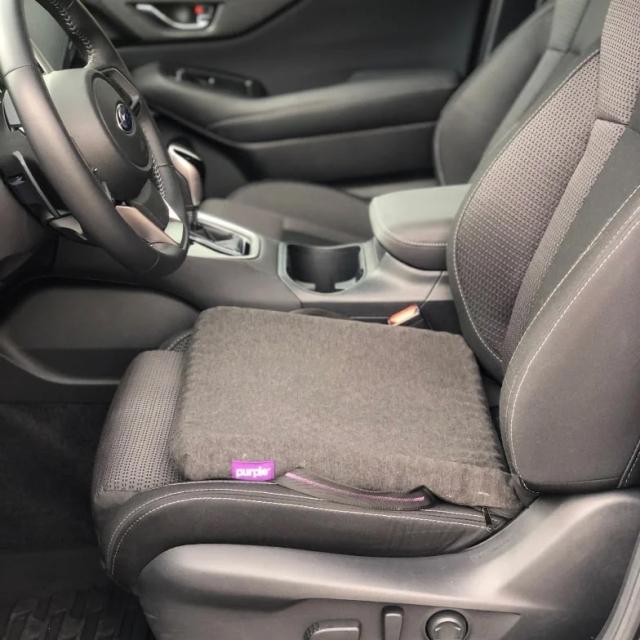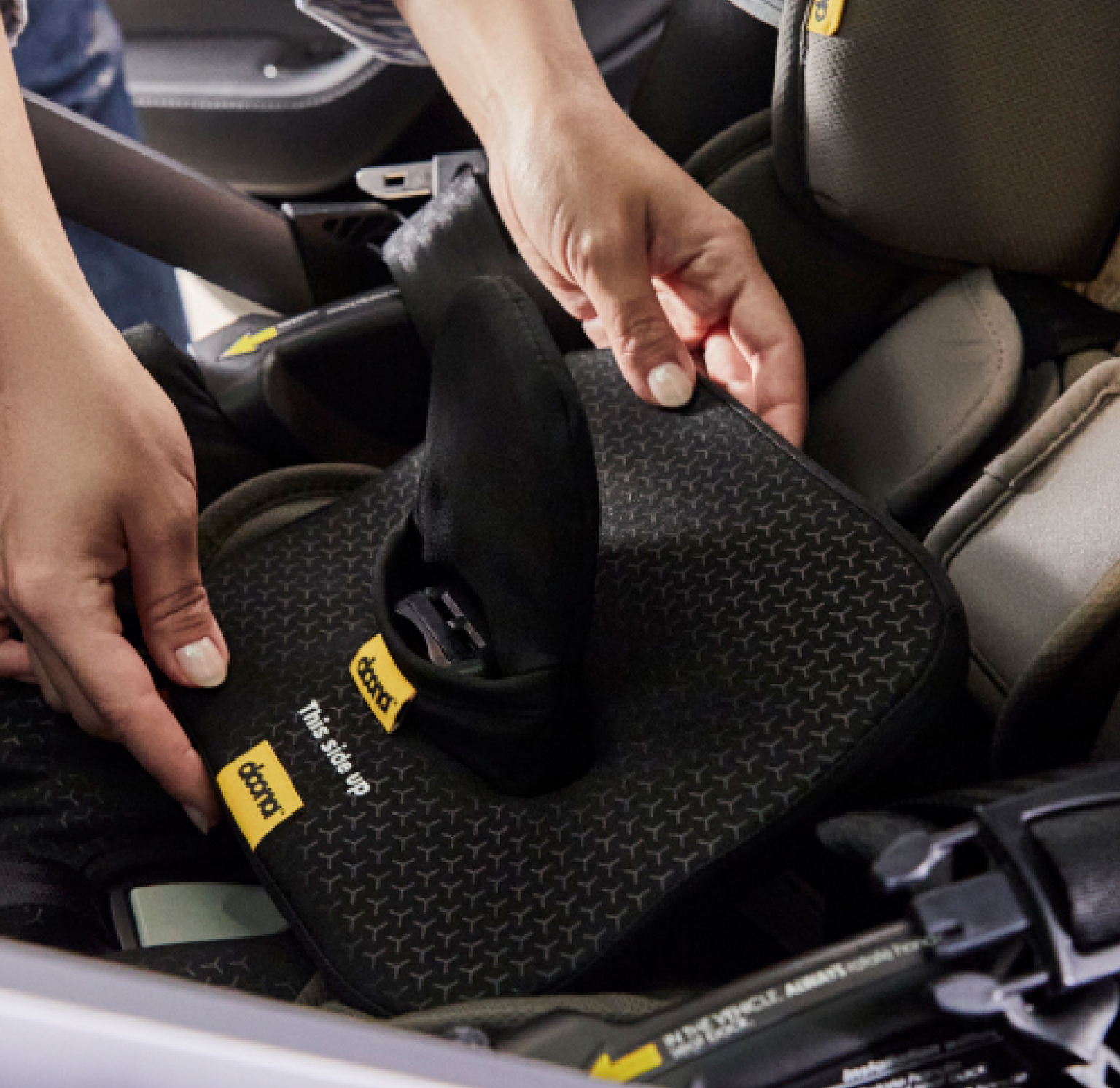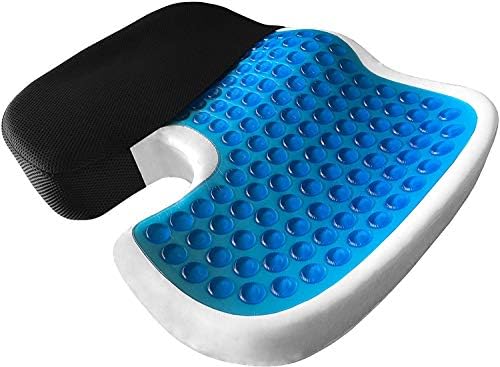When to Take the Cushion Out of a Car Seat
As a parent, you want to make sure your child is safe and comfortable at all times, especially while traveling in a car. One important aspect of ensuring their safety is properly installing and adjusting their car seat. However, as your child grows, you may have questions about when to remove certain features, such as the cushion, from their car seat. In this article, we will discuss the factors to consider when deciding when to take the cushion out of a car seat.
Infant Outgrown Car Seat

The cushion in a car seat is designed to provide extra support and padding for infants and small children. This is particularly important for rear-facing car seats, as young infants have less developed neck muscles and need the extra support. However, the cushion may no longer be necessary as your child grows and becomes stronger.
One of the main reasons to remove the cushion from an infant's car seat is when they outgrow it. The American Academy of Pediatrics (AAP) recommends keeping children in a rear-facing car seat until they reach the maximum weight or height limit allowed by the manufacturer. This is usually around 40 pounds or 40 inches tall. Once your child reaches this limit, it is time to transition them to a forward-facing car seat.
When to Use a Car Seat Without Cushion

Once your child is ready to move to a forward-facing car seat, you may wonder if the cushion is still necessary. The AAP recommends using a car seat without a cushion once your child is at least 2 years old and weighs over 40 pounds. However, some forward-facing car seats allow you to remove the cushion earlier. It is important to check the manufacturer's instructions for your specific car seat to determine the appropriate age and weight for removing the cushion.
Another factor to consider is the comfort and fit of the car seat without the cushion. Some parents find that their child is more comfortable without the cushion, as it may provide better posture and support. Additionally, a car seat without a cushion may fit better for larger or taller children. It is important to find the right balance between comfort and safety when deciding whether or not to use a car seat without a cushion.
Time to Transition to a Booster Seat

Once your child outgrows their forward-facing car seat, they will be ready to transition to a booster seat. Booster seats do not have cushions, so there is no need to remove one. It is recommended to keep your child in a booster seat until they are at least 4 feet 9 inches tall and between 8-12 years old. This is when they can safely use a seat belt without the assistance of a booster seat.
It is important to note that some states have laws requiring the use of a booster seat until a certain age or height. It is essential to familiarize yourself with your state's laws to ensure compliance and your child's safety.
Legal Requirements and When to Remove Cushion

As mentioned above, some states have laws regarding the use of car seats and booster seats. These laws are in place to ensure the safety of children while riding in a vehicle. It is essential to follow these laws to avoid any potential legal consequences and, more importantly, to protect your child.
In addition to state laws, the National Highway Traffic Safety Administration (NHTSA) also has guidelines for the proper use of car seats. The NHTSA recommends keeping children in rear-facing car seats until they reach the age of 2 or the maximum weight/height allowed by the manufacturer. After that, children should ride in a forward-facing car seat with a harness until they outgrow it. Once they outgrow the forward-facing car seat, they should transition to a booster seat until they are old enough and big enough to use a seat belt without assistance.
Child's Height and Weight Considerations

In addition to age, your child's height and weight are essential factors to consider when deciding when to remove the cushion from their car seat. As previously mentioned, the maximum weight and height limits for car seats are typically around 40 pounds or 40 inches tall for rear-facing seats and over 40 pounds for forward-facing seats. However, every child is different, and some may outgrow these limits sooner or later than others.
It is crucial to regularly check your child's height and weight to ensure they are still within the recommended range for their car seat. If they have exceeded the limits, it is time to remove the cushion and possibly transition them to a new car seat. This will not only ensure their comfort but also their safety while traveling in a vehicle.
Posture and Support Without a Cushion
One of the main concerns parents have when removing the cushion from a car seat is whether their child will still have proper posture and support without it. The cushion is designed to provide extra padding and support, especially for infants and smaller children. However, as children grow and become more active, the added cushion may actually hinder their movement and comfort.
Without the cushion, your child's body is in direct contact with the car seat, allowing for better posture and positioning. Additionally, most modern car seats are designed with enough padding to provide adequate support without the need for an extra cushion. It is important to adjust the car seat properly to fit your child's body size to ensure optimal support and comfort.
Safety Concerns and When to Keep Cushion
While there are many benefits to removing the cushion from a car seat, there are also some safety concerns to consider. The cushion provides extra protection for young infants and may help keep them in a safer position during a car ride. Without the cushion, there is less padding between your child and the car seat, which may increase the risk of injury in the event of an accident.
If your child is still within the recommended weight and height limits for their car seat but appears uncomfortable without the cushion, it is best to keep it in place. The added comfort and support may outweigh the minimal safety concerns in this scenario. It is important to regularly check your child's comfort level and make adjustments accordingly.
Benefits of Using a Car Seat Without Cushion
There are various benefits to using a car seat without a cushion, one of which is improved posture and support, as previously mentioned. Additionally, removing the cushion can help ensure a better fit for larger or taller children, making them more comfortable during car rides.
Another benefit is cost savings. Instead of purchasing a new car seat when your child outgrows their current one, you can simply remove the cushion and continue using the same seat. This also reduces waste and is more environmentally friendly.
Furthermore, removing the cushion may improve air circulation and reduce the risk of overheating during hot weather. This can be especially beneficial for long car rides or in warmer climates.
Proper Seat Adjustment and Harness Positioning
When deciding whether or not to remove the cushion from a car seat, it is crucial to ensure proper seat adjustment and harness positioning. A properly adjusted car seat is essential for your child's safety and comfort. The seat should be at the appropriate angle, and the harness should be snug enough to keep your child secure but not too tight to restrict movement or cause discomfort.
It is recommended to consult your car seat's user manual for specific instructions on adjusting the seat and harness. Some car seats have different features that may require specific adjustments with or without a cushion. It is important to follow the manufacturer's instructions to ensure optimal safety and comfort for your child.
Consultation with a Child Passenger Safety Technician
If you are unsure about when to remove the cushion from your child's car seat or have any other questions or concerns, it is always best to consult with a certified Child Passenger Safety Technician (CPST). These professionals are trained and certified in car seat safety and can provide valuable information and guidance on this topic. They can also assist with proper car seat installation and answer any other car seat-related questions.
Many local hospitals and fire stations offer free car seat checks, where you can have a CPST inspect your car seat and provide feedback. You can also find a certified technician near you by visiting the NHTSA website.
Conclusion
In conclusion, there is no one-size-fits-all answer to the question of when to remove the cushion from a car seat. It depends on various factors, including your child's age, height, weight, comfort level, and specific car seat instructions. However, some general guidelines can help you make an informed decision. Remember to always prioritize your child's safety and comfort when making any adjustments to their car seat. And when in doubt, consult with a Child Passenger Safety Technician for expert advice.



